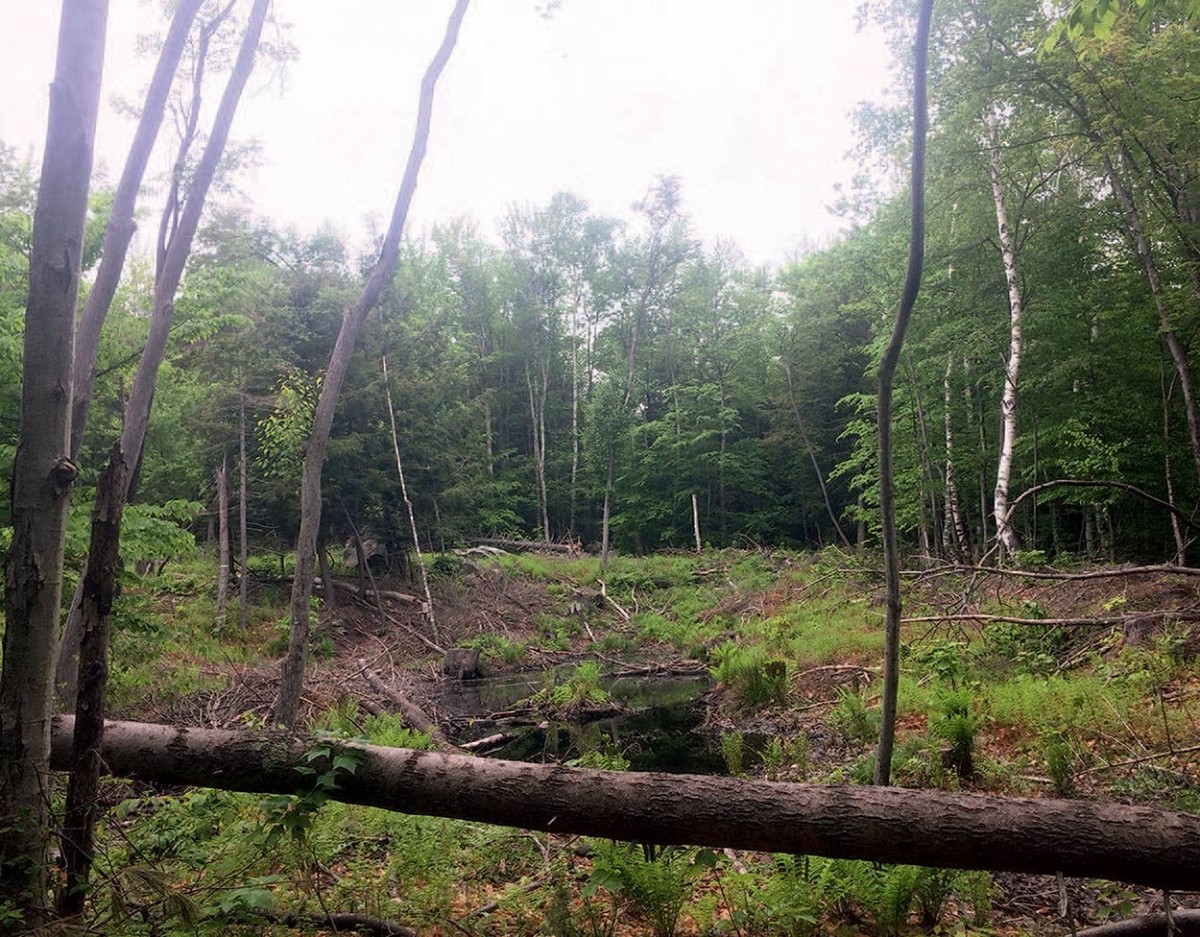
My neighbors are having some trees cut on their land. When I asked about it, they told me not to worry – that it would be a “selective cut.” What is a selective cut? And what does it mean for their forest?
While the terms selective cutting and selective cut have no precise silvicultural meaning, they are commonly used to describe any logging that selects some, but not all, of the trees in a forest to be cut. In essence, these terms describe any logging project that’s not a clearcut.
While I have sometimes heard responsible forest management described as a selective cut, selective cutting has frequently in the past been a euphemism for high-grading – a practice where only the most valuable (usually the healthiest) trees in the forest are cut, and the less valuable (usually less healthy) trees are left standing. The aftermath of a selective cut like this might be less visually jarring than a clearcut, but high-grading can actually be more harmful than clearcutting in many ways, as it can diminish the health and the value of a forest while also failing to create enough light to establish a new generation of healthy trees.
Suggesting that there are only two types of forest management – either a selective cut or a clearcut – does a disservice to the incredible variety of silvicultural techniques modern foresters employ. Within the silvicultural treatments that may be called selective cuts are a variety of approaches designed to address specific conditions in a forest, to alter the structure and composition of a forest to make it more diverse and more resilient, to provide improved habitat for wildlife, and to work within various landowner objectives.
For instance, an intermediate thinning treatment gives the healthiest trees in an even-aged forest more room to grow, while single tree selection and group selection treatments involve cutting individual trees and groups of trees of all ages to encourage the development of a diverse, multi-aged stand. A standard shelterwood leaves widely spaced trees (which are removed during multiple entries) with the goal of regenerating seedlings, while an irregular shelterwood may require harvesting groups of trees and individual trees over the course of decades, with the goal of establishing a diverse two-aged or multi-aged stand. These treatments – in terms of intention and implementation – are vastly different from one another and completely different from a wanton high-grade. And yet, all may be called selective cuts.
The term clearcut is also often misused. In silvicultural terminology, clearcutting is the practice of removing all, or virtually all, the trees in an area larger than 10 acres. That said, I have heard people describe everything from a 10th-acre group opening to roadside mowing as clearcutting. While clearcutting is not a commonly used treatment in most of the Northeast, it does have a place in responsible silviculture. For instance, silvicultural clearcuts can be used to regenerate degraded and unhealthy stands of trees, creating conditions for a healthier, more diverse, and more resilient future forest. Even clearcuts are not monolithic; by placing them thoughtfully and incorporating strategic tree retention, a clearcut can be a rich and fertile beginning for a degraded stand.
To the general public, forestry – and the language used to describe it – can be confusing. As we work hard to build a culture of responsible forest management, it is important that we are precise in both our implementation of forest management and in the words we use to explain it. To that end, the most important thing to know about the term selective cut is that it is essentially meaningless.
So, when your neighbor tells you that they’re doing a selective cut, ask some more questions. Are they working with a forester? Do they have a forest management plan? What are their goals? If they don’t have answers to these questions, one of the most helpful things you can do is to guide them toward a forester.


Discussion *